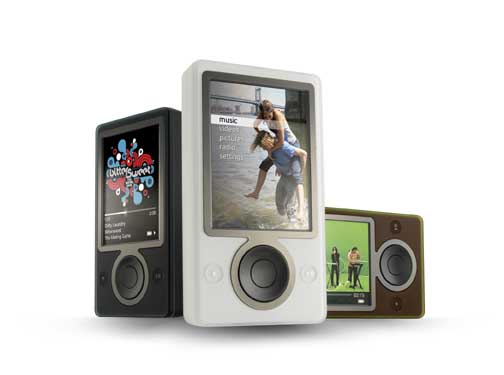In these days the first press releases appear to the products on the part of Microsoft, which were developed at first top secret under code name "Argo". In the meantime first product data and information are abandoned to Zune. After Zune Microsofts answer to Apples Ipod is, the task consists of it, the own digital medium players more lucratively to arrange more affordable and better than the competition for Microsoft. Therefore Zune captivates at present (September 2006) with an LCD video monitor relatively large for such mobile devices, which away-stretches itself over 3 tariff. Own data to consequence could pictures be regarded videos and never better than with the monitor of Zune with small video playing devices. The non removable disk capacity and/or the memory of Zune products amounts to 30GB, which makes a storing possible of approx. 7500 music files/Songs, 25000 pictures or videos with an overall length of 100 hours. Playlisten or Song data bases will be with the MP3-Playern also possible and simple by software to provide. Likewise a Slideshow is available for pictures. A further advantage, which Zune brings with itself, the Wireless LAN (WLan) is interface, which makes it for the owners possible of the multi-talents to exchange among themselves medium files which the receiver can listen to then within three days for example three times. If this would like the Song durably to listen to or its own to call be able, then can it has it comfortably over Zunes own market place (similar that iPods: iTunes) acquire. Microsoft would like to equip each Zune owner with a "Zune passport", on the basis whose it is identified and which can buy Songs. In things optics convince those send devices, which are in the colors brown, black and white available.

The basic functions of Zune are video, sound rendition, photo announcement (Slideshows), the Wireless LAN communication and the FM radio. In the reference to the price Microsoft tries to bring in relation to a further advantage iPods with itself, since, even if still no exact prices were published, which should be more competitively and concomitantly more favorable of Toshiba manufactured devices than those the competition. In the international press release it comes out besides that Zune will appear still before the Christmas business 2006 on the market.
